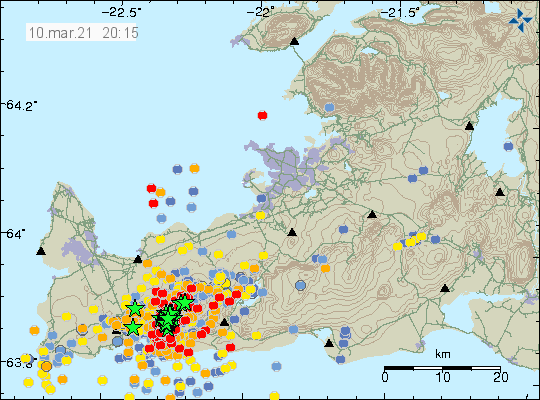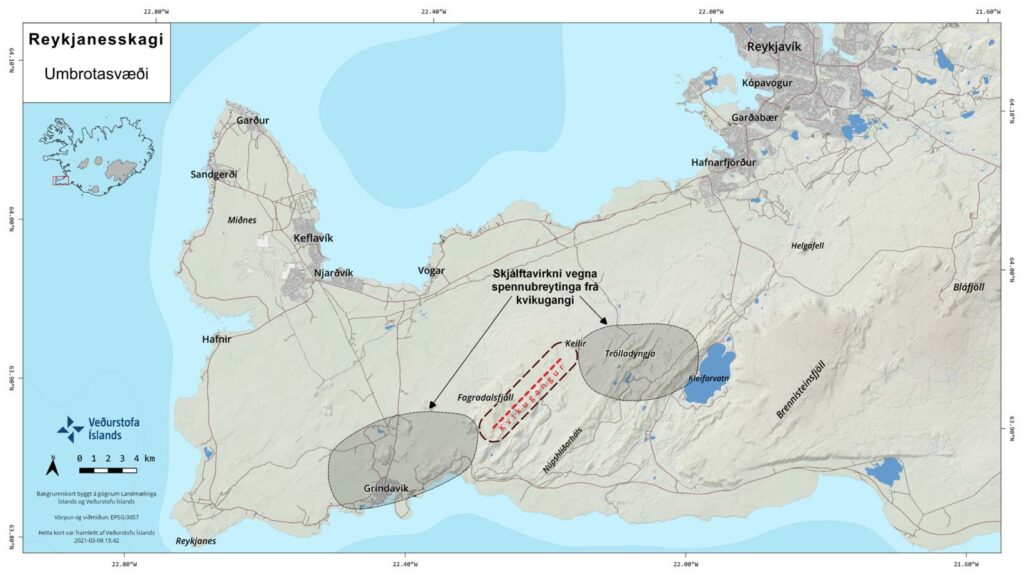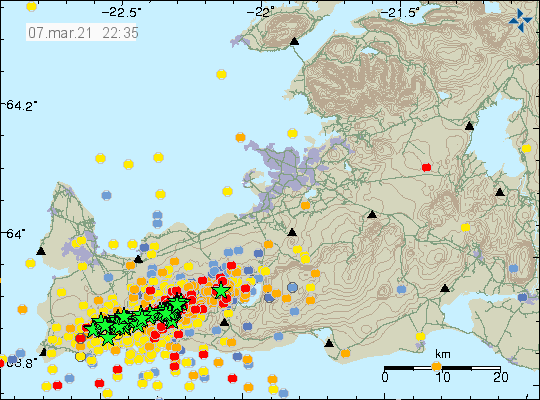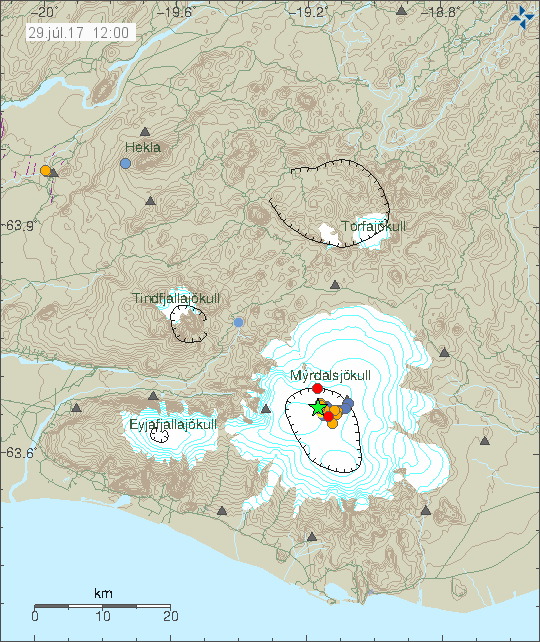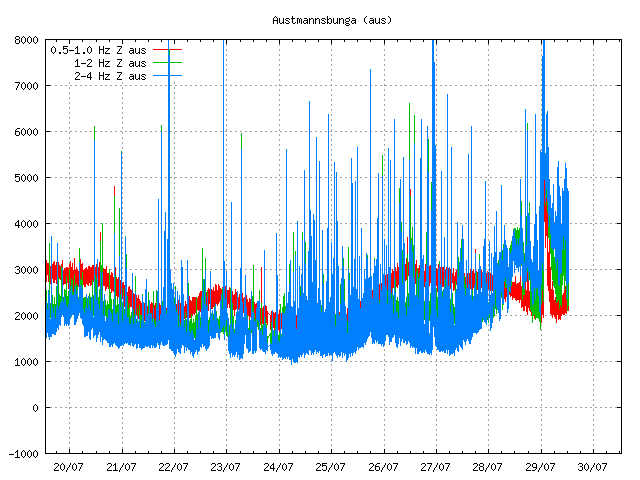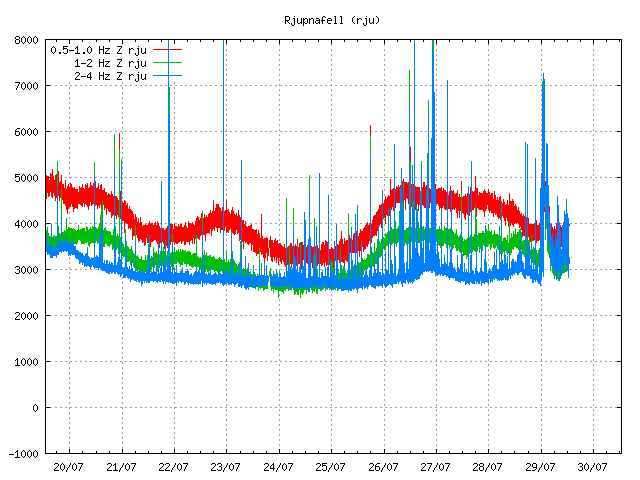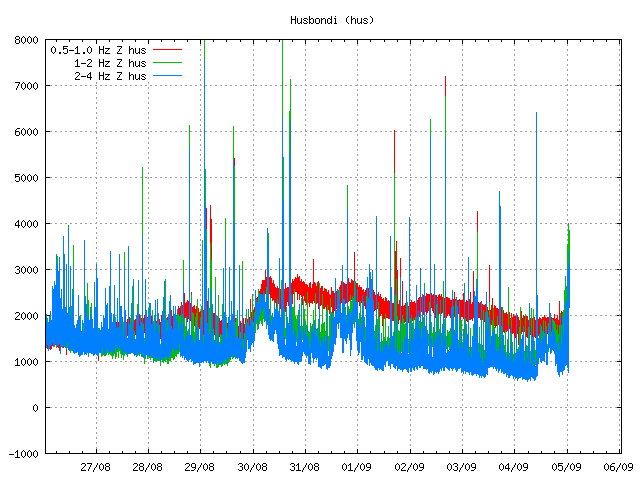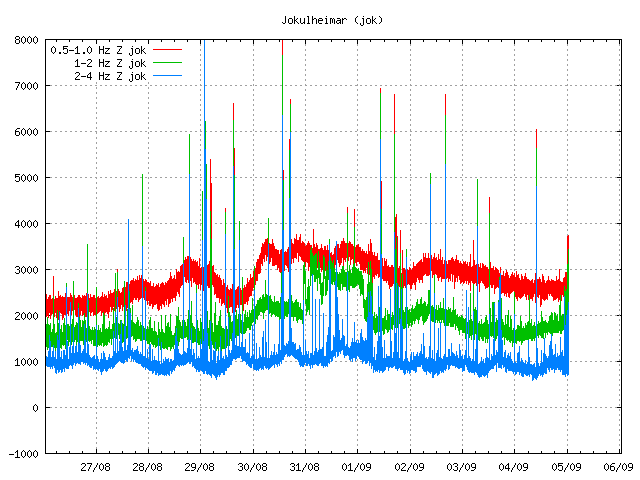This information is going to get outdated quickly. This article covers Krýsuvík-Trölladyngja volcano. This article is written on 21-March-2021 at at 00:40 UTC.
- This eruption is tiny. The amount of magma erupted is now around 0.02km3 but this number might not be fully accurate since I’ve not seen any published number about of volume of lava erupted so far.
- This is unconfirmed but it is possible that an new fissure opened up under the lava field next to the hill side (seen on the web camera, this is on the left side).
- The current erupting fissure is now about 200 meters long and might be getting shorter.
- Earthquake activity has almost stopped at the writing of this article.
- This eruption might only last 1 to 3 days before it stops.
- There is no sign of deflation in the GPS data at the writing of this article.
There are no other reports about this eruption at current time. This might change without warning.
Web cameras
Beint vefstreymi frá eldstöðvunum – Rúv.is – Live from the eruption.
Beint vefstreymi af eldgosinu – Vogastapi (Rúv.is) – Added 22-March-2021. View from a distance. Should show a red glow from the eruption if the weather isn’t too bad. – This web camera is no longer active!
Update at 15:28 UTC – One side of the main crater collapses
Here is a video of the main crater collapse on one side and give lava a new path for short period of time. At the writing of this update that path for the lava has closed down again.
Gígbarmurinn gefur sig og ný hraunrennslisæð myndast (Rúv.is)
Update at 21:21 UTC
Kvikustreymið braut sér nýja leið (Rúv.is) – This is a new video of the crater collapse that took place at 14:20 today (21-March-2021).
Article updated at 15:29 UTC. New information added.
Article updated at 21:21 UTC. New information added.
Article updated at 03:06 UTC on 22-March-2021. Web camera added.
em>Article updated at 16:34 UTC on 22-March-2021. Web camera has been removed by Rúv – comment added to that web camera.


